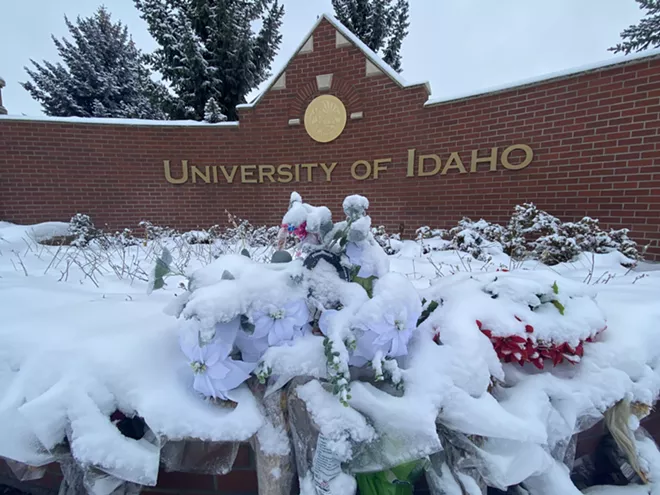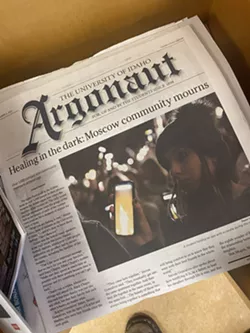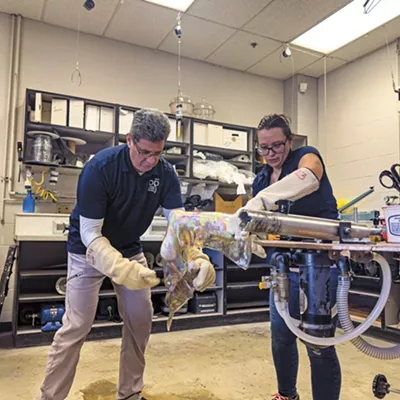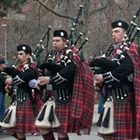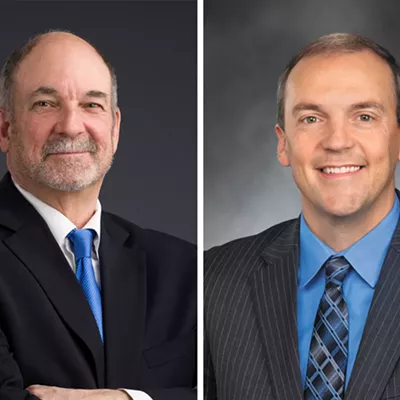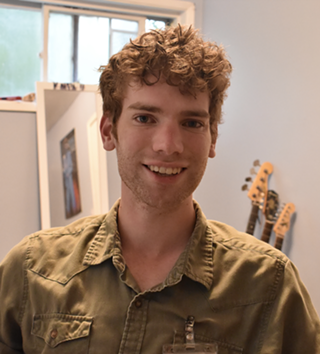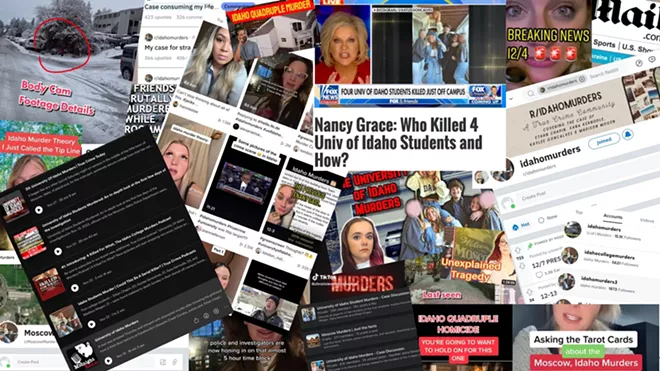
Brandon Schrand was traveling for a conference in Texas when he heard the news: Four University of Idaho students were dead — stabbed in their beds by an unknown assailant.
Schrand works at Washington State University, but he previously spent more than a decade teaching creative writing at University of Idaho. He still has strong ties to the area. His son had briefly met one of the victims through a fraternity connection.
"You always hear that trope — 'tight-knit community' — but it bears out," Schrand says. "If you didn't know one of the victims, you probably knew somebody who did."
The timing was eerie. Just a few weeks earlier, Schrand had released the first episode of "The Snake River Killer," a true crime podcast about the murder and disappearances of five young people along the Washington-Idaho border in the early 1980s. The unsolved cases have been attributed to a possible serial killer.
So when news of the quadruple homicide in Moscow broke, Schrand says his inbox started blowing up with messages.
"Is this going to be season two of your podcast?" he recalls them asking.
The idea makes Schrand a little uncomfortable.
"Woah, I can't even get my head around that right now," Schrand says. "I just... for me it's too soon. "
That hasn't stopped others.
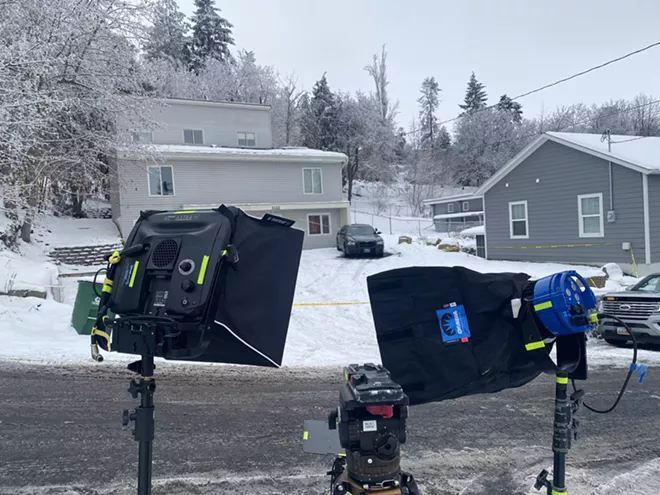
Over the past month, as investigators struggle to identify a suspect or motive, the True Crime Content Machine has been at full blast.
Within days, hundreds of hours of true crime podcasts and YouTube videos dropped. The media was there too. Local reporters and a few student journalists were soon joined by reporters flown in from across the country. Other outlets stayed remote, retooling press releases and wire copy into search engine optimized web content from around the globe.
The #idahomurders hashtag has more than 500 million views. Across thousands of videos, true crime content creators have been posting daily updates picking apart every detail of the case. Some videos contain factual information lifted from news reports; Others feature psychics and tarot card readings.
Even if you live on the other side of the country, the internet makes it possible to immerse yourself in the case. People are pouring over satellite photos, news reports, security camera videos, Google street view, 3-D apartment floor plans, police body camera footage from unrelated incidents and the social media history of the victims and the people close to them. They're looking for something — anything that might shine a light on why someone would do this.
It's easy to get lost in the infinite scroll.
"Case consuming my life..." reads the title of one Reddit post, by a user who describes themself as a 22-year-old female college student who watches a lot of true crime. They say they can't stop thinking about the case. It's making it hard to sleep at night.
In her post, she describes hiding a knife up her sleeve when maintenance workers came by her apartment to test the fire alarm.
One of the victims tied to the Snake River Killer in the 1980s was Kristen David, a University of Idaho student.
David disappeared in 1981 while biking along Highway 95 near Lewiston. A fisherman found her remains in garbage bags in the Snake River a week later.
In some ways, Schrand says the public reaction to David's death mirrors what we're seeing today. A candlelight vigil. Fundraisers. Communal grief over a senseless crime.
But other aspects have been dramatically different.
If people were spreading misinformation and rumors back then, it seems to have stayed at the water cooler. The newspaper letters to the editor contain some sexism and dated language, Schrand says, but none of the wild speculation that's come to dominate social media discussions about the Moscow killings.
The internet, Schrand says, is "creating its own animal."
In some cases, people on social media are posting the full names, phone numbers and addresses of people they think are connected to the murders. The evidence they point to is flimsy: A flirty, year-old Instagram comment from an ex-boyfriend can look like a smoking gun when stripped of context and blasted out across hundreds of online communities.
Many of the people targeted by the online sleuths have gone silent, but others have tried to push back and clear their names. On Friday, Rebecca Scofield, a University of Idaho professor, filed a defamation lawsuit against Ashley Guilard, a TikTok user who had posted videos accusing them of the murders. (The allegation was based on tarot cards.)
The deluge prompted the Moscow Police Department to put out a news release saying the large volume of rumors and speculation was leading to threats and harassment towards potentially involved parties. The department pleaded with people to stop, and warned that online sleuths could be risking criminal charges for harassment.
"It's bad, it's hurting people," says Robbie Johnson, a spokesperson for the Moscow Police Department.
Most of the people following the case online haven't been harassing people or sharing blatant misinformation. But even then, true crime content can be fraught.
There's an inherent tension in the genre: More eyes on a case can increase the odds of someone catching something police missed, but it can easily stray into sensationalism — an almost game-like obsession with picking apart the details of a real person's tragedy.
It's a tension Schrand is conscious of, and he navigates it well in his podcast about the Snake River Killer, which is heavy on original research and assistance from people connected to the case — including the victim's family members. But he acknowledges that those editorial standards are sometimes absent from the genre.
"You have some stuff where it's literally two talking heads reading a Wikipedia article," Schrand says.
There's always been a market for true stories about violent crimes, but it's really over the past decade that the popularity of shows like "Serial" and Buzzfeed's "Unsolved" have propelled the genre into the stratosphere. The world of true crime content is vast — ranging from professionally-produced Netflix documentaries to amateur podcasts to TikToks.
"It's very much a staple genre of media that our generation consumes," says Abigail Spencer, the news editor for The Argonaut, the University of Idaho's student newspaper.
When I visited Moscow earlier this month, I spent the entire drive (and preceding week, honestly) listening to podcasts about the murders.
It's morbid and hard to look away. But when you listen for too long, it all starts to blend together into a horrible auditory stew. Any semblance of a clue gets picked apart and dissected ad nauseam; Phrases like "food truck guy," "2011 Elantra" and "fixed-blade knife" become lodged in your head.
Listening back to back also underscores how little we actually know about what happened. It's the same story told over and over again, with varying levels of speculation, sensitivity and ad breaks. The locations and figures central to the case start to feel like set pieces, and take on an otherworldly sort of importance. It's the creation of an American folk myth in real time.
But then you see the town in person, and the building pictured in a thousand news reports, TikToks and YouTube videos is... just a college house. A house where four real kids died.
The street was empty when I got there, save for an idling car that was probably a cop. There was a ring of police tape around the house, and a pile of camera equipment that seemed abandoned in the snow.
The University of Idaho campus was also almost entirely deserted. When I met with Spencer in The Argonaut's campus newsroom, she explained that many of the students had left for break early. Spencer wants to pursue a career in journalism after she graduates, but she says watching the media reaction to the murders has given her a new perspective on some aspects of the profession — not necessarily a positive one.
"I think in general there's a lack of sensitivity," she says, referring to some of the national media outlets that parachuted into campus, shoving cameras in student's faces.
When the case broke in mid-November, the social media frenzy came for Spencer's newsroom. Her sorority sisters started sending her TikToks that mentioned Spencer by name. It was weird.
"They don't even live here — why are they talking about me?" Spencer says.
Spencer says she knows multiple people who've been accused by the online mobs. One friend was targeted by internet sleuths because he drives a white car similar to the one identified by police. He wasn't even in town on the day of the murders, she says, but he still had to lock down all of his social media accounts to ride out the storm.
She says the attention has made her fellow students suspicious of media, wary of giving interviews that could feed into the online frenzy. Some classmates have taken to social media to push back on the speculation, reminding onlookers that Moscow is a place where real people live — not some stereotypical small town torn apart by a tragedy no one thought could happen here.
"This isn't Riverdale, this is a real place," Spencer says, exacerbated.
Not all true crime content is harmful and insensitive. There's a lot of good, thoughtful stuff out there that feeds the deep-seated human need to explore horrible things and try to understand why they happen. It's important to talk about, if only to help us process things.
And even if 99.9 percent of the speculation turns out to be false, there's always a chance that someone might catch something. When 22-year-old social media influencer Gabby Piteto disappeared last year, online true crime enthusiasts churned out a lot of baseless speculation and noise, but some have argued that internet detectives may have helped locate Piteto's remains. (Others say police would have found them regardless.)
Johnson, with the Moscow Police Department, says that while some of the speculation has led to harmful harassment, the large volume of public interest isn't necessarily a bad thing.
"The attention does help," she says, "because it does encourage people to think about what they may have seen."
It's a double-edged sword. Schrand recalls the now-infamous Boston bomber investigation, where Reddit users falsely identified a missing person as the prime suspect in the marathon bombings. People harassed and threatened that person's family, but it later turned out that the person they were accusing was dead — they had committed suicide shortly before the bombings took place.
The need to assign narrative and meaning to every act of senseless violence can distort reality, and lead people in search of answers that simply don't exist.
"We're socially conditioned to think that murders can be solved within like, 25 minutes of television," Schrand says. "The reality is, these things are wildly complex."
The crimes detailed in true crime content tend to be sensational — think murders and kidnappings. But those things are really rare in the United States. When they do happen, the culprit is often a family member or someone otherwise known to the victim, not some random, shadowy figure lurking in the streets. Critics say true crime tends to overlook that fact — instead giving viewers a distorted view of the world that emphasizes surveillance, over-policing and distrust in other people.
Before going to Moscow, I stopped by the nearby town of Lewiston to cover a memorial for the 22 people who died while homeless in Moscow, Lewiston and Clarkston this year. Those deaths, arguably, also stem from an act of violence. But it's hard to make true crime content when the culprit is a vast, merciless system.

Violent crime in America tends to disproportionately impact Black men, Indigenous women and other marginalized communities. But the creators, consumers and subjects of true crime content tend to be young, white women. Critics have used the phrase "missing white woman syndrome" to describe the phenomena in traditional and social media.
It can all manifest in a type of paranoia now endemic to social media. Urban legends about human trafficking frequently go viral, cementing the idea that danger is lurking behind every corner. Earlier this fall, an Instagram post led to a multi-day panic about a serial killer in Seattle, forcing police to put out a statement saying no such killer exists.
Over the summer, while working on his podcast about the Snake River Killer, Schrand had a panic attack. He saw it as a sign that it was time to take a break, read something that wasn't about murder. True crime is fine in moderation, he says, but in excess, it can lead to a pretty dark headspace.
"You can get a very skewed view of the world," Schrand says.

